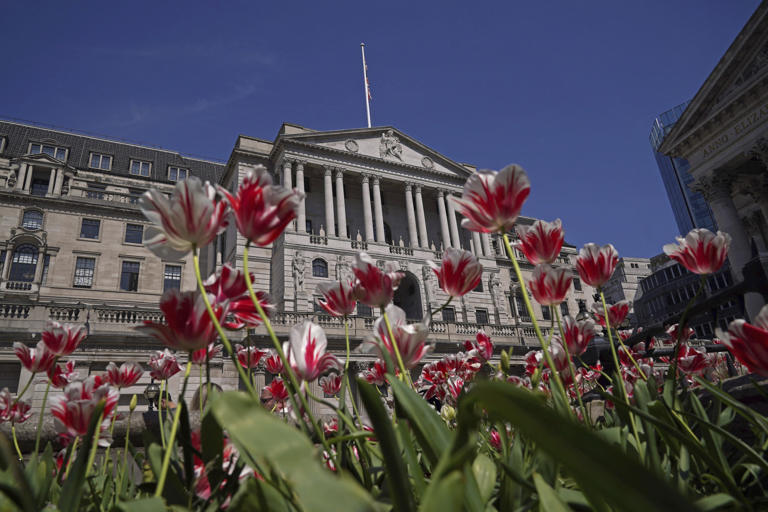Inflation in the U.K. saw a significant decline in April, reaching its lowest level in nearly three years. The Office for National Statistics reported that the consumer prices index (CPI) fell to 2.3% in the year to April, down from 3.2% in March. This drop is largely attributed to substantial reductions in domestic bills. The last time inflation was this low was in July 2021, during the global economic slowdown caused by the coronavirus pandemic.
This decline in inflation is noteworthy as it brings the rate closer to the Bank of England’s target rate of 2%. With the current rate now at 2.3%, there is increasing pressure on the Bank’s nine-member rate-setting panel to consider cutting interest rates from their current high of 5.25%, a level not seen in 16 years. The next meeting to discuss interest rates is scheduled for June 20, and many economists believe a rate cut might be on the table. However, some analysts argue that persistent concerns about price increases in the services sector and rising wages might delay such a move until August.
Despite the welcome drop in inflation, it did not fall as much as some economists had hoped. This underperformance highlights that the cost of living crisis, considered the worst in about 40 years, is far from over. Lower inflation indicates that prices are rising more slowly, but it does not mean that prices have stopped increasing. Consumers are still grappling with significantly higher prices compared to previous years, affecting their overall purchasing power and living standards.
James Smith, research director at the Resolution Foundation, commented on the mixed implications of the latest inflation data. He acknowledged that while it is positive that headline inflation is nearing normal levels, it is disappointing that price pressures have not eased further. The stubborn inflation in the services sector, in particular, remains a concern. This persistence suggests that certain areas of the economy are still experiencing significant inflationary pressures, making it challenging to achieve a comprehensive reduction in the cost of living.
Inflation in the U.K. reached a peak of over 11% at the end of 2022, largely due to sharp increases in energy costs following Russia’s invasion of Ukraine. Over the past two years, prices for goods and services have risen by approximately 15%, with food prices surging even more, around 25%. These increases have strained household budgets and exacerbated the cost of living crisis.
To combat inflation, the Bank of England, along with other central banks like the U.S. Federal Reserve, raised interest rates aggressively from near-zero levels starting in late 2021. The strategy aimed to cool the economy by making borrowing more expensive, thereby reducing spending and easing price pressures. This approach has contributed to bringing down inflation rates globally. Recent figures indicate that the British economy has started to grow again, a positive sign amidst the ongoing economic challenges.
The drop in inflation and the potential for falling interest rates come at a crucial time for Britain’s governing Conservative Party. With a general election required by January 2025, the party hopes that these economic improvements will foster a sense of optimism among voters. Currently, opinion polls suggest that the main opposition Labour Party is leading over the Conservatives, who have been in power since 2010. The economic narrative will likely play a significant role in shaping voter perceptions and preferences.
Prime Minister Rishi Sunak remarked on the importance of the inflation data, stating that the return to normal inflation levels marks a significant moment for the economy. The government is likely banking on the combination of lower inflation and reduced interest rates to boost public sentiment ahead of the upcoming election. While the economic indicators are moving in a favorable direction, the challenge remains to ensure that these improvements translate into tangible benefits for consumers and voters, thereby enhancing the overall economic outlook and political stability.
